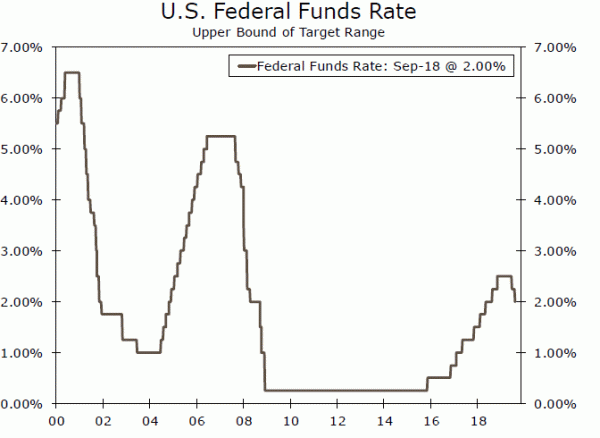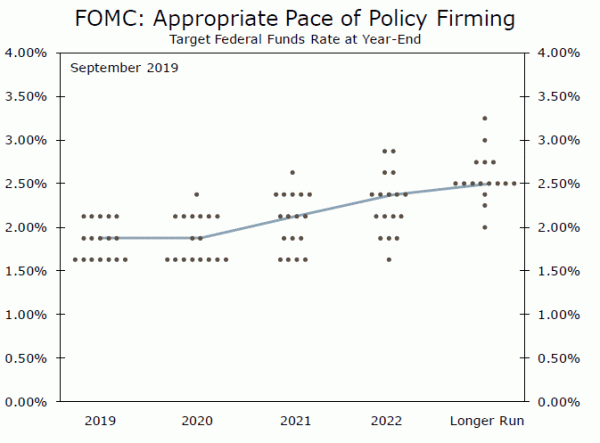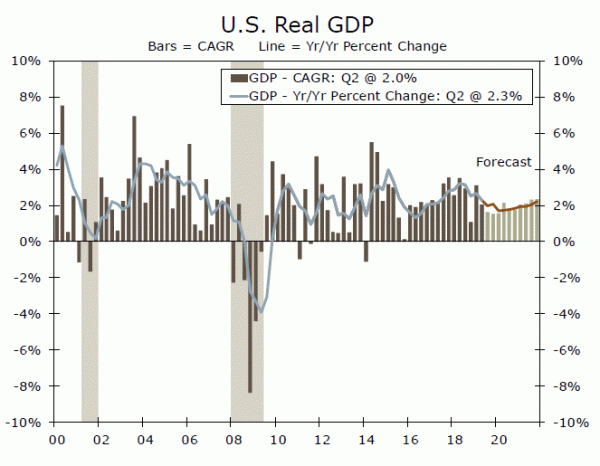FOMC Cuts Rates and Dot Plot Shifts Lower
As widely expected, the Federal Open Market Committee (FOMC) reduced its target range for the fed funds rate 25 bps at its policy meeting today (top chart). Moreover, the statement that was released at the conclusion of the meeting was little changed relative to the statement that followed the July 31 FOMC meeting. Specifically, the language characterizing the current state of the economy was generally upbeat, and it stated that “sustained expansion of economic activity” is likely. However, the FOMC noted that “uncertainties about this outlook remain.”
We see some indications in the statement and projection materials that the FOMC is prepared to ease further, if appropriate, in coming months. For starters, the committee noted again that it “will act as appropriate to sustain the expansion.” Furthermore, St. Louis Fed President Bullard dissented in today’s decision because he would have preferred a 50 bps rate cut. (As they did in July, however, the presidents of the Boston and Kansas City Federal Reserve Banks dissented because they thought that no easing was appropriate at this time.)
More importantly, the dots in the so-called “dot plot” shifted down relative to June, the last time the committee released its projection materials. (The dot plot shows the anonymous expectations of each committee member regarding the appropriate level of the fed funds rate in the future.) Some of the downward shift in the dot plot reflects the 50 bps of rate cuts that the FOMC has implemented since June. But the dots for 7 of the 17 committee members have shifted down to 1.625% at the end of 2019 (middle chart). Because the mid-point of the current target range is 1.875%, these lower dots indicate that a significant number of committee members, albeit not a majority, favor further easing this year. Moreover, 8 of the 17 dots at the end of 2020 stand at 1.625%.
The committee also reduced the rate that it pays on the excess reserves that banks hold at the Fed (the so-called “IOER”) 30 bps. As we wrote in a recent report, the Fed has had some difficulty controlling short-term interest rates recently. The cut in the IOER should help move the fed funds rate back into the target range.
Looking forward, we expect that the FOMC will cut its target range 25 bps in the fourth quarter of this year and another 25 bps in Q1-2020. Although we look for the expansion to continue (bottom chart), we acknowledge, as the FOMC noted in its statement, that uncertainties raised by the trade war cloud the outlook. That said, these expected rate cuts are by no means assured. As the Boston and Kansas City Fed dissents indicate, there are some committee members who are not prepared to ease further at this time. The FOMC will continue to digest incoming data as it contemplates the future course of monetary policy















